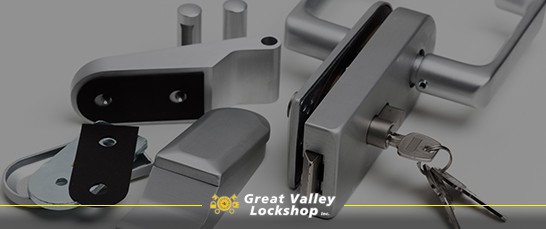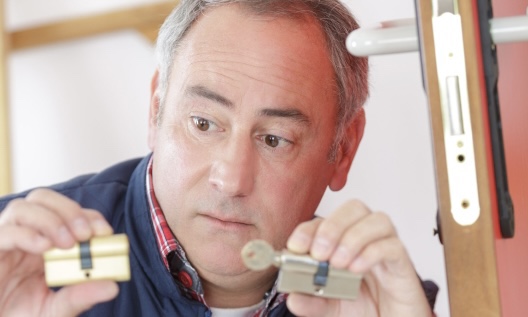Valuable Advantages Of PVD Coating For Hardware

Valuable Advantages of PVD Coating for Hardware
Table of Contents
What is PVD coating?
PVD (Physical Vapor Deposition) coating, also known as thin-film coating, is an advanced technique used for depositing thin layers of metal onto a surface in a vacuum. Through this process, a material is vaporized atom by atom, allowing it to bond with the surface of a part or a product, enhancing its appearance and durability. PVD coatings are not just simple metal layers; they can consist of complex compound materials. PVD coating finds applications in various industries including optics, semiconductors, solar energy, decorative finishes, and architectural hardware. It’s often used in the manufacturing of door handles, hinges, locks, and for color coating that does not fade. Examples of other applications could include self-cleaning tinted windows, computer chips, medical devices, and even jewelry.
The two common forms of PVD coating processes are Sputtering and Thermal Evaporation. Sputtering involves releasing atoms from a target material using a high-energy electrical charge, which then deposits on a substrate. On the other hand, the Thermal Evaporation method heats a material to boiling point in a vacuum, causing it to evaporate and form a coating on the substrate. A significant aspect of PVD coating is its potential to create a highly durable, corrosion-resistant and scratch-resistant surface. These coatings can also reduce friction and provide a protection layer against damage. Specific characteristics of the coating can be customized depending on the elements and procedures used.
PVD-coated materials, such as titanium nitride, are known for their resistance to corrosion and wear, thus making them very suitable for use in hardware applications, daily use items like door handles or drill bits, and even decorative items. Moreover, PVD coating is environmentally friendly as it does not emit harmful by-products and does not need post-treatment cleaning. Studies suggest that PVD coatings can extend the lifespan of a product by up to ten times, often lasting for over 25 years, making it a durable and sustainable option.
What are the advantages of PVD coating for hardware?
Physical Vapor Deposition (PVD) coating offers numerous advantages including the following:
- Substantial Durability: PVD coats are incredibly strong, resulting in a high resistance to scratches and abrasion, thus maintain the original aesthetics of products for a prolonged period. Despite not being entirely scratch-resistant, the durability of PVD-coated items leads to a long lifespan.
- Corrosion and Weather Resistance: Particularly effective for hardware in coastal areas exposed to salty air and UV rays, PVD coatings are notably resistant to corrosion. This resiliency also makes PVD coating an excellent selection for external doors and garden or bathroom door handles. PVD coatings are known to be four times harder than chrome, making them remarkably resistant to scratching, fading, and discoloration.
- Ease of Maintenance: While no product is entirely maintenance-free, the resistance provided by PVD coatings drastically reduces the need for continual upkeep, contributing further to extended lifespan.
- Versatility in Design: The variety of styles available in PVD coatings allow for comprehensive customization, providing a perfect match for your interior decor.
- Sustainability: In comparison to other finishes that involve toxic cleaning solvents, cyanides, acids, hexavalent chrome, pigments, and other harmful chemicals, PVD coating is a more environmentally sustainable process. It doesn’t release harmful emissions or waste, and doesn’t compromise the recyclability of the stainless steel base material.
What are the disadvantages of PVD coating?
From a consumer point of view, the only disadvantage may be the price. For manufacturers, the PVD process is complex, requires special machinery and more time. Because of this, hardware with a PVD finish is likely to cost more than similar products on the market.
What types of applications is PVD coating recommended for?
Decorative Coatings
PVD is used extensively for decorative purposes, especially in the commercial hardware industry, due to the wide array of color possibilities and durable finish it offers. The PVD coating can be applied to various parts of hardware sets extending from door handles to window handles, to cabinet pulls, providing a protective layer across various fixtures.
Harsh Climates
PVD coating is particularly beneficial for hardware installed in coastal areas due to its superb corrosion resistance against humidity, wind-blown grit, and salt spray. It’s an excellent solution for fighting against the elements and maintaining the appearance and functionality of a property’s hardware. Regardless of weather conditions such as UV rays, rain, or salty air, PVD coatings protect architectural hardware from rust, especially in humid and salty environments.
In harsh weather conditions, PVD coatings are significantly more protective compared to lacquered or painted metal finishes, making them ideal for exterior applications. Despite this, remember that PVD coatings, while strong, are not indestructible and routine cleaning and maintenance are still necessary.
The Best Commercial Hardware for Your Business
Schedule a consultation with our expert commercial locksmith to find the best quality hardware for your business.
Resources
- AtriaInnovation, “Physical vapor deposition (PVD),” October 2021.
- Casson: Architects, Designers, Builders; “Hardware Finishes – PVD Coating and Powder Coating FAQ,” December 2022.
- EuroArt, “Why should you choose pvd coating for door hardware?,” August 2022.
- Matt Hughes, Semicore Equipment; “What is PVD Coating?”




